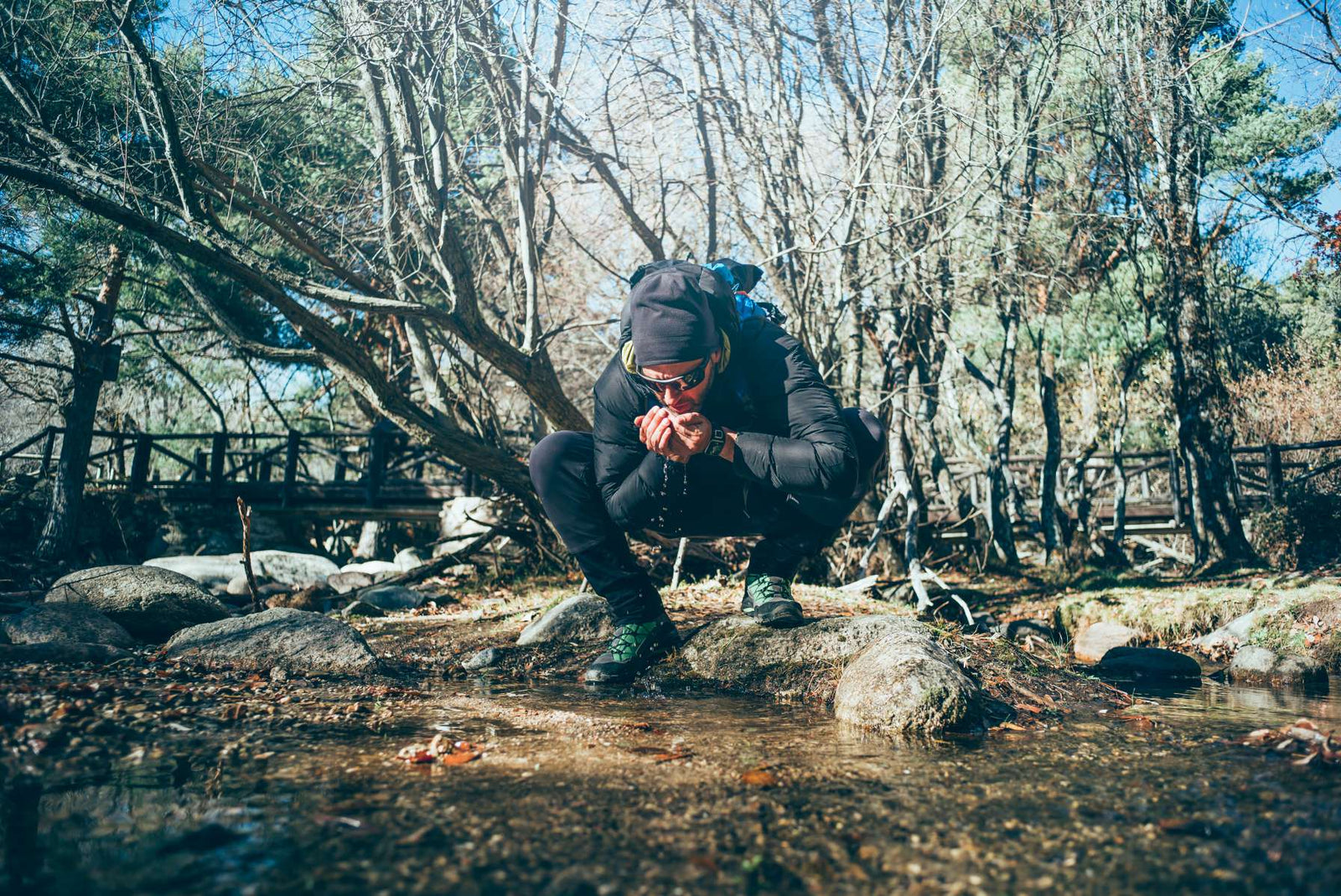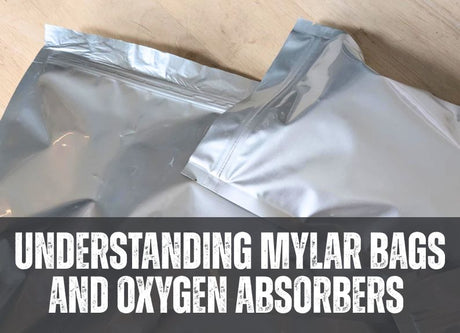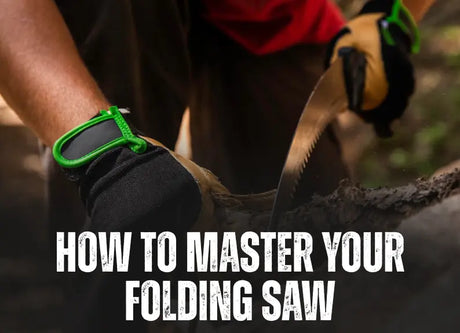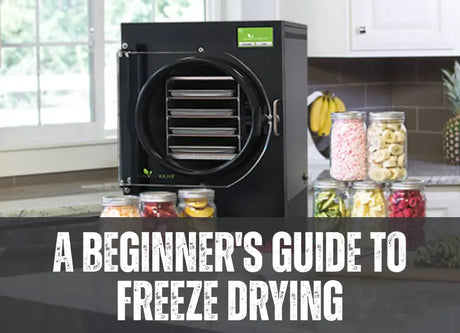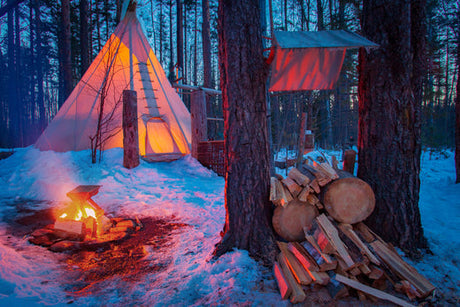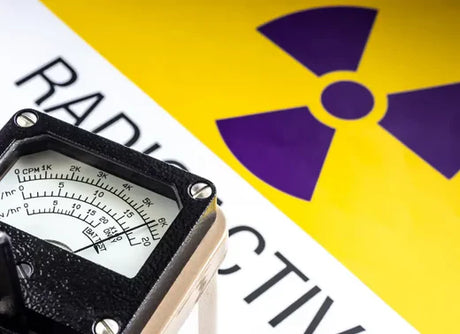When you think of shit hitting the fan apocalypse survival scenarios, you might think of wild looting, zombies, or Madmax style roaming criminals, but the reality is that a lot of people will be scrambling for basic necessities and will be completely unprepared. One of the most essential items for any human will be clean water. In this blog, we will give you the top nine ways to filter water in any survival situation.
The real causes of death after grid down.

You might think a band of looters would be the number one threat to you or your family, but the reality is much more simplistic. As humans, not being able to secure our basic needs for warmth, food, and water will be the actual killer.
The top five ways people will perish when the world crumbles:
- Exposure to the elements
- Malnutrition
- Waterborne pathogens
- Disease
- Dehydration
9 ways to filter dirty water for survival.
-
Boiling
Boiling water is one of the easiest ways to eliminate waterborne pathogens and bacteria––however, it requires precious resources. You can boil water with a simple wood fire (see our blog about fire styles to learn more). Fire can alert people to your location and eat up your precious energy to collect and chop wood. We recommend a parabolic mirror that harnesses the sun’s power to create concentrated energy that can boil water and even light a log on fire.

-
Solar disinfection (SODIS)
 This method uses the combined effects of ultraviolet light (UV) induced DNA damage, thermal inactivation, and photo-oxidative destruction to sterilize water. Both field and laboratory data show that the SODIS method successfully makes viruses, bacteria, and protozoa that cause diarrheal diseases inactive.
This method uses the combined effects of ultraviolet light (UV) induced DNA damage, thermal inactivation, and photo-oxidative destruction to sterilize water. Both field and laboratory data show that the SODIS method successfully makes viruses, bacteria, and protozoa that cause diarrheal diseases inactive.
You will need a clear pop bottle and the sun. Take a clear plastic bottle full of low-turbidity water (turbidity refers to the amount of sediment, dirt, or particles in water) shake to oxidize, and place in direct sunlight for 6 hours to 2 days depending on your environment––the sunnier it is, the less time is required.
-
Solar still method
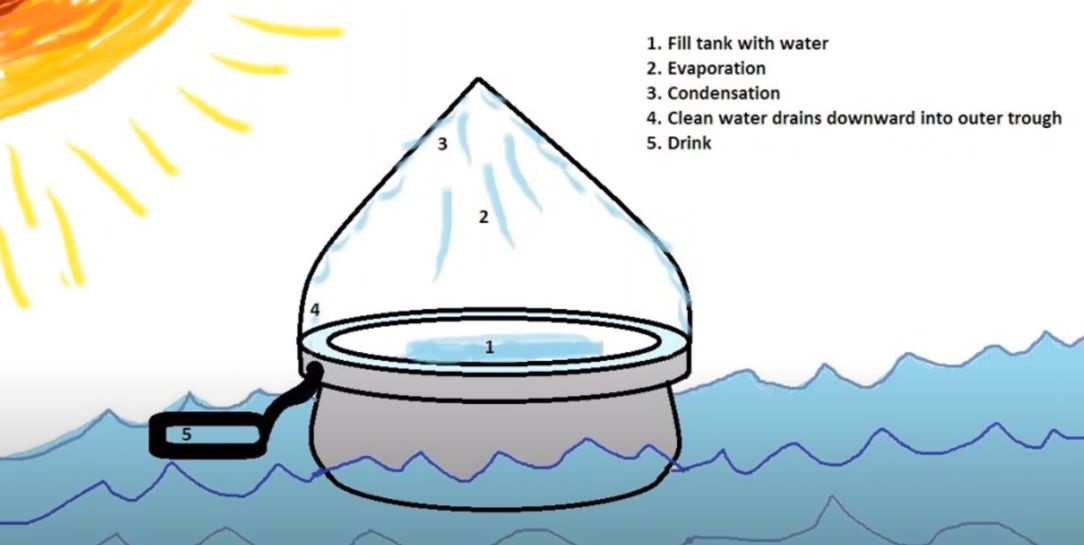 There are many ways to set up a solar still, including condensation traps, solar wells, and transpiration. These methods use condensation to purify and collect water where other viable sources are not available. They can also be used as a method for desalinating water. While it will not be enough water to sustain you, it is a great method for increasing the amount of clean water you have at your disposal.
There are many ways to set up a solar still, including condensation traps, solar wells, and transpiration. These methods use condensation to purify and collect water where other viable sources are not available. They can also be used as a method for desalinating water. While it will not be enough water to sustain you, it is a great method for increasing the amount of clean water you have at your disposal.
-
Filter using natural materials
 While this method does not guarantee the elimination of microorganisms and deadly viruses, it is an excellent way of eliminating water turbidity, which can then be treated with another method like SODIS or boiling. Using a vessel, water travels through gravel, sand, charcoal, and finally, through a cloth. Once it emerges, it will be clear of debris and sediment. If you want to learn more about how to make charcoal, you can visit our youtube channel.
While this method does not guarantee the elimination of microorganisms and deadly viruses, it is an excellent way of eliminating water turbidity, which can then be treated with another method like SODIS or boiling. Using a vessel, water travels through gravel, sand, charcoal, and finally, through a cloth. Once it emerges, it will be clear of debris and sediment. If you want to learn more about how to make charcoal, you can visit our youtube channel.
-
Microporous filtration

This filtration system removes all insoluble substances from the water, making it safe for consumption. This method filters out sediment, protozoa, bacteria, and chemicals (if a filter is equipped) from source water. We recommend Berkey water filtration systems––we use them in our homes daily, and they can be taken to the cabin or put in your bug-out vehicle. In addition, they require very little power and can easily be powered using solar or crank generators.
-
Chemical filtration

You can use iodine (about 5-10 drops per litre depending on turbidity) or bleach to sanitize water. It is important to note that bleach does have a shelf life, however, count on a prepper to have a trick up their sleeve. We recommend Pool Shock (calcium hypochlorite)––a stable shelf product that can disinfect up to 10,000 gallons of water per container! Ensure you practice safety with any of these chemical solutions as they are toxic when in their concentrated form.
To use Poolshock for water purification: Use one level spoon of Poolshock and add to some water (this will create bleach), swish to mix into the solution.Use this solution to purify water by adding 1part solution per 100parts water.
Use one level spoon of Poolshock and add to some water (this will create bleach), swish to mix into the solution.Use this solution to purify water by adding 1part solution per 100parts water.
The MSR Water Purification kit:
The SE200 Community Kit allows you to make bleach from salt and water using electrolysis. This process takes just five minutes to produce enough chlorine to make 200 liters of potable (safe drinking) water. Using a wall plug, car battery, or even a car adapter you can make clean safe water with ease.
-
Distillation and desalination
Separate from the solar still, distillation of water requires a few more steps and materials but would work very well for a permanent bug-out location or even as a backup for your home. There are a number of ways to make easily transportable distillation kits, which are also able to desalinate water. Water that is distilled using steam is the benchmark that all other water purification types are measured against. If you can distill water, it is a great way to have clean, pure water.
-
Reverse Osmosis
While this process requires significant energy, installing a reverse osmosis system with a power generator or solar panel backup is feasible. Reverse osmosis uses high-pressure microporous filters to clean water.
-
Use a dehumidifier
This is strictly a last resort method as it will filter out the essential nutrients you require from water. However, you can use a dehumidifier to pull moisture from the environment if you become desperate for water, or need water to use for other purposes besides drinking.
Be prepared for anything.
Being prepared is not just a fringe concern for preppers. Access to clean water is a concern worldwide, and your access to clean drinking water can be upended at any moment with a contamination spill or natural disaster. View all of our water supplies to prepare you and your family for anything. Remember that access to water should be at the forefront of your preparedness plans.

